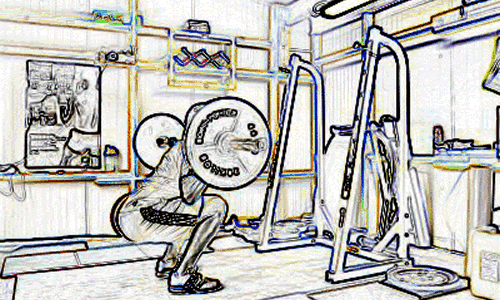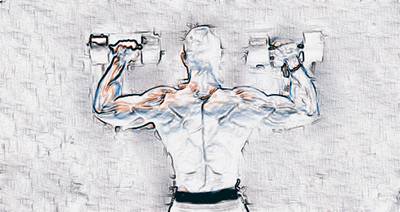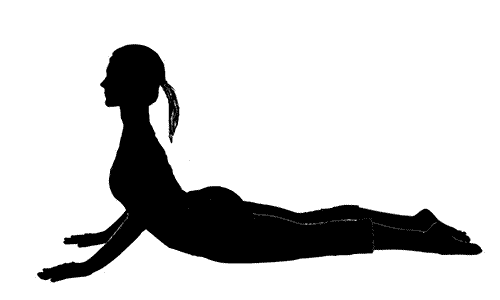Most of the people who are surrounding you are full of the hunger for money and fame. The whole sociable set-up, our complete system is following money and also fame and that is the reason the actual desire with regard to Supreme is not allowed to rise.
When the divine thirst emerges, all the hungers – such as thirst of money and the being thirsty for fame – will merely disappear. It is a false belief that people are doers and it is this impression that makes people miserable and also unhappy. Inhaling and exhaling is the most inexpiable processes and it is with the medium of breath how the body is united with the spirit.
When you inhale and exhale deeply and also you observe simultaneously that a breath will come in as well as goes out. Whenever you simply observe the inhalation and exhalation, you come to know that not only you are separate from the physical body; the breath is also separate from you.
Then you know that you are simply an observer separate from both, the physical body and the breathing process. Your separation from your body can be identified through inhaling and exhaling.
The situation with Yoga and Meditation is much like as the doorways of your house in darkness to permit sun in. Although the sun offers risen in the east, when you keep your doors close, you will be in the dark.
There are millions of tensions stored in your body and you are not aware of them, even though they’re your own selections. Society has created our way of life thus unpleasant which even when you are angry; you keep smiling before him or her. Due to these social restrictions your body has turned into storage of tensions; 1000s of tensions are accumulated within your body.
These kinds of knot of concerns are there as well as liquefaction is quite required; normally you are never allowed to the express these stored tensions to go beyond the body. With all the dissolution of the tensions, knots and complexes, your body can be as gentle as floral. The complete chemistry with the entire physique experiences a sea change. Our body starts to understand, believe as well as realize the prevailing situations in a different way altogether.
All the electric circuits within the body modify.
To Increase Oxygen Ratio
There is a specific quantity of carbon dioxide as well as oxygen in your entire physique; meditative breathing changes its ratio. As soon as this ratio changes, accompanying modifications will start taking place in the body, the mind, the blood and the central nerves. You start accepting all that happens to you, and let go of yourself entirely and accept everything that happens on its own.
Yoga is really a method of making you normal and, repairing you of one’s dynamics once more. If the mind is filled with any lustful wish associated with anger or desire, reduce the pace of inhaling, relax, and you’ll find it leaves you. Without having to be triggered simply by breathing this energy can’t function.
No-one can be angry in the event that you retain the inhalation slow, regular and also relaxed. Deep breathing hits the basic centre and as the experience may expand you’ll plainly begin to start to understand the exact place where it really is struck simply by inhaling.
First effect of breathing will be sensed around the centre which is your most lively centre as such. For example, if you constantly work using with your brain, after meditative breathing your brain will end up heavy. It will likely be due to the fact your mental faculties centre is your most active centre.
Breathing is one of our most important functions. Proper breathing promotes more oxygen to the blood and to the brain. In the process of respiration we all inhale air (oxygen) into our body, proceeding via the body systems in a form of energy to charge our different parts of the body.
Next all of us breathe out carbon dioxide and bear off many toxic wastes from our own system. But life is filled with stress because of the everyday work, family responsibilities, or financial problems; we all often disregard our own breathing. Hence, this tends to end up being quick and of shallow breathing.
Heart illnesses, rest problems, as well as fatigue are the effects regarding oxygen malnourished.
Simply by practicing deep and systematic breathing with Pranayama, we can all re energize our entire physique. With breathing exercise, we all increase the actual capability of our lungs, delivering more oxygen supply for the body to operate properly. All of us learn how to take a breath easy and profoundly – the right way.
Morning Exercise (Mild Breathing Technique) (20 Minutes)
1st STAGE (10 Minutes):
You should sit and also keep your distance in one more to ensure that people who would like to lie down might do this easily. Nobody will talk; gone will be the chit-chatting whatsoever. All of you will sit down quietly.
Shut your eyes and start breathing deeply. Breathe in as much as you can, as well as exhale as much as you are able to.
Put your whole energy in inhaling and exhaling significantly, breathe deeply and exhale deeply.
Apply yourself totally and for the First Ten minutes work tirelessly along together using deep breathing.
Permit each fiber of the body vibrates along together using inhaling and exhaling and also observes that you’re inhaling deeply. Keep witnessing in which air is going out and coming in regularly.
Observe from inside that breathing is coming in and going out on a regular basis, continually as well as vigorously.
Deep shake of inhaling will begin to wake up some energy within you. Together along using your vigorous inhaling and exhaling a sleeping light in you will flare up.
2nd STAGE (10 Minutes):
Now you must forget about your body totally and relax. Breathe in and out deeply and then leave your body free.
For 10 minutes continue breathing.
If the body takes particular postures and also gestures – allow it to take them. Don’t slow down your breathing.
Whatsoever occurs in your body enables it totally; don’t come in its way at all. Don’t keep anything.
The energy is rising, so inhale and exhale significantly and then leave the body uninhibited and free.
Let go of the body as well as don’t hesitate for the coming emotions, let them come and washed away.
The more you exert the more rest will be available. The higher the movement you raise, the deeper the energy will go down in you.
Let whatever happens to the body, happen it freely.
Now drop all efforts of breathing exercise and enter the last stage of relaxation and rest.
Give up everything and for 10 minutes lie in waiting for the glimpse of the inner mind / thoughts functions.
Now open your eyes slowly and further breathe deeply but slowly, and then get up gently.
It’s blissful being anything totally, due to the fact once your total becoming is involved, all of the latent energies of the body accumulate together and cooperate with you.
Pranayama
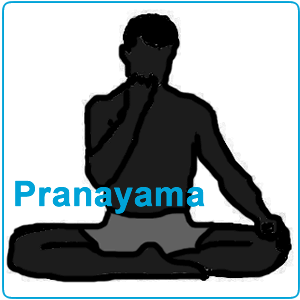
Pranayama is the advancement and charge of life force. It’s a kind of inhaling and exhaling exercise, extremely important in yoga exercise. It goes along with the asanas (postures).
Breath is the vital force which maintains life. Nobody can easily make it through many minutes without air. When the inhale halts, life ends.
The expert forefathers associated with Yoga developed a special system- ‘Pranayama’ to improve, create and control this kind of vital force.
“Prana” (Life Energy) is breath or even essential vitality in your body.
Upon delicate amounts prana signifies the pranic power in charge of life energy, and “ayama” indicates control. So Pranayama is actually “Control of Breath.”
It’s possible to manage the rhythms of pranic energy (life energy) with pranayama and achieve healthy body and mind.
Practice associated with Pranayama accomplishes the balance in the routines of the pranas, which results in healthy body and mind.
Normal inhaling just uses a fraction of the prospective respiratory system efficiency.
Pranayama helps to handle this kind of vitality inside an exceptional and additional normal way to reap highest benefits.
There tend to be various types of Pranayama. A few of the well-liked forms are usually Ujjayee, Shitali, Viloma, Kapalabhati, Anuloma, etc.
Some of them can be carried out inside a sitting placement while others in the standing up series or sitting down position.
Kapalabhati
Kapala signifies head as well as Bhati signifies gentle or luster. Within this pranayama breathing is sluggish and breath will be vigorous using a moment of preservation following each and every out-breath.
Sit down right in any comfortable position both together with thighs surpassed or even in the lotus position.
Inhale slowly, relaxing the abdomen allowing air to go back lightly towards the lungs. Exhale having a quick, strong great time with air.
Contract the stomach muscles quickly causing the system to rise as well as force the air from the lungs.
Retain to get a split second as well as repeat four to eight exhalations. This is one period of Kapala-bhati.
Relax as well as feel a deep breathing among the particular cycles. Begin with 3-5 cycles and gradually increase as long as you feel comfortable.
Stop this exercise the minute discomfort or stress is felt.
Persons with weak metabolisms, bad lung capability, higher or low blood pressure, suffering from eye or ear canal complaints and so forth must not try this kind of pranayama.
It purifies the nasal passing and also the lungs, improving the physique get rid of vast amounts related with carbon-dioxide and other impurities.
It triggers and stimulates the spleen, pancreatic as well as stomach muscles and improves digestion. It is good for bronchial asthma patients and people who smoke and those suffering from sinus problems.
Ujjayee
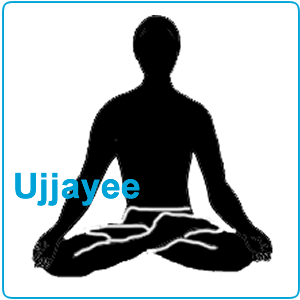
Ujjayee can be carried out in a standing position and in a sitting position.
Standing Position -Remain together with each your heels collectively and hands clinging on both attributes freely.
Make a good position regarding all the toes, each and every foot ought to be split up to produce a good angular shape such as “V”.
The body fat should be consistently on heels, so that your neck is also straight. Look straight.
Feel the incoming air and exhale along with pace as well as force hurling every one of the air via mouth.
The speed in the course of exhalation is the same as when you whistle.
When you complete breathing out, your own abdomen ought to be entirely drawn inside or caught and many types of old gases needs to be squeezed out.
Inhale slowly and gradually as well as continuously through both nostrils.
Take in Only the maximum amount of air as possible without having strain.
While inhaling and exhaling your system problem should settle at ease. Retain air as well as stiffen the whole physique gradually.
Chest ought to step forward and also belly ought to be drawn back to the inside.
Gradually stabilize the particular muscle tissues with the whole body beginning with the particular legs. Retain only as long as you feel comfortable.
Exhale as well as allow entire body loosens slowly and gradually in the top area as a result of the feet. You should not allow the weight fall all at one time.
The help to loosen of the physique need to synchronize together with exhaling. Relax and also breathe typically with regard to 8-10 seconds.
Now you have finished one round of Ujjayee pranayama.
Ujjayee Pranayama helps with the inner purification and also improves health and fitness with the body.
Total breath increases oxygen supply towards the blood–hemoglobin levels. It has soothing effect on nervous system.
t’s great for people suffering from heart problems and high blood pressure.
It helps you to clean and nurture the body and for sustaining energetic health.
Sitting position Sit cross-legged on to the floor or on your own knees in erect position. Keep your torso straight and do not lean ahead.
Place the cushioning beneath the buttocks or the legs if you’d like much more support.
Breathe in slowly, maintaining the mouth shut and in part shutting, or contracting, the back of your throat to be able to reduce the inhale.
Maintain it for some seconds. Then exhale, once again in part closing or even contracting at the back of the neck to be able to reduce the inhale.
Repeat it five times. As you become better at this, try to exhale for over you inhale.
It increases lung capacity, opens the chest, relaxes the actual central nervous system, increases oxygen in the blood, decreases phlegm and strengthens the immune system.
Shitali
Shitali signifies cooling. This pranayama treats the body as the meaning of the title. It can be practiced at any time, everywhere and also whenever necessary. Sit directly on the floor.
Start to presume sing slightly, in a way how the tip of the tongue should be nearer to equally outlines of the teeth. Inhale oxygen slowly and steadily through as well as between your outlines of the tooth having a moderate speed.
When you have inhaled sufficient air, exhale your breath through equally nostrils in a moderate speed.
Again take a breath through the mouth just as and continue this process for a few rounds.
It calms the whole body as well as the nervous system. It has a pacifying and alleviating impact for a number of troubles such as headache, fevers etc.
This activates the lever as well as spleen; improve digestion of food as well as reducing thirst. Shitali pranayama is highly suggested as a possible quick treatment for nervousness.
Some Important Breathing exercises to do at home:
Abdominal Breathing
Sit easily in a cross-legged position on the floor or flat lying on your back in the corpse pose. Place the cushioning under the buttocks if you want more support.
Hands may be calm from the attributes or else you can place one palm about the stomach to really feel that increasing and falling. Relax the mind and body.
Breathe in gradually and also deeply through the nose, sensation your stomach increase and keep the chest area still.
As you exhale, look at the abdomen area sink down.
Increase the stomach around the breath in and contract the particular belly around the breath out. Exercise this particular exercise ten times.
Breathing gradually and also deeply delivers air towards the lower part of your bronchi and exercises may significantly enhance inhaling and exhaling capacity.
It calms mind and body, massages internal organs, calms inner thoughts and induces peaceful sleep.
Rib Cage Breathing
Sit comfortably in a cross-legged position on the ground or flat lying on your back in the corpse pose.
Place the cushioning under the bottom if you need a more support.
Place the hands on the sides with the bones to be able to sense all of them growing and also contracting.
Lightly treat the particular abdomen, inhale slowly from the nostril directly into your own rib cage.
Do not pull the inhale strong directly into your lungs; yet keep it targeted between your ribs.
Have the ribs increase outward and also the chest available when you breathe in.
While you exhale, feel the bones contract back to the inside. Repeat it five times. It calms the mind and the body as well as tones up the lungs.
Alternate Nostril Breathing (Viloma & Anuloma)
Sit comfortably in the cross-legged position on the floor. Keep the backbone and also neck straight, but not tight. Do not lean forward.
Place the support underneath the hips or the legs if you’d like a lot more support. Place the left hand on your left knee.
Lengthen the thumb, finger as well as pinkie (small finger) of your hand and retract lower your other two fingers into your palm.
Start by closing your right nose together with your thumb and also take a breath slowly through the left nostril for a count of eight.
After that press, the sun finger and also pinkie fingers against the nasal area, closing the left nose shut while keeping the thumb besides the right nostril, as well as hold for a count of eight.
Raise the thumb in the right facet with the nasal area, starting the right nose. Exhale slowly and also completely with the right nostril for a count of eight.
Inhale slowly and gradually as well as profoundly with the right nostril, nevertheless keeping the still left nose closed for the count of eight.
Cover the right nose with the thumb as well as maintain a count of eight.
Release the left nose and also let out your breath through the left nostril for the count of eight. Repeat it five times.
It calms and balances the mind and body, aids relaxation, increases concentration, tones up respiration.

